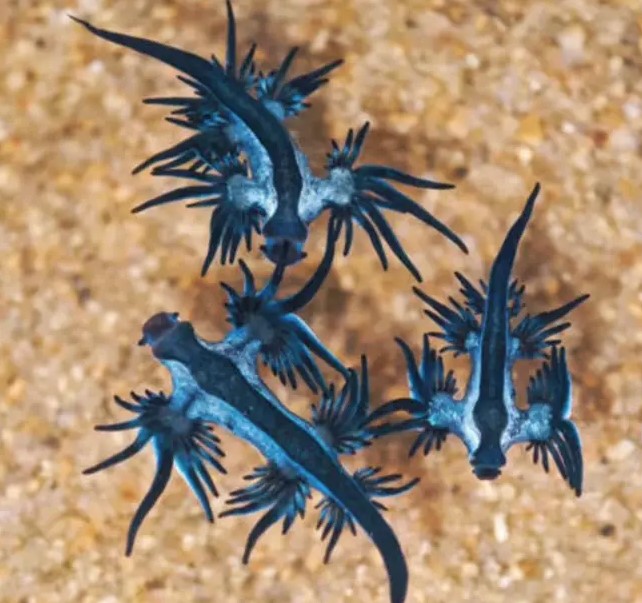
Deep sea creatures are rare and can be extremely dangerous to humans. They often live beneath the ocean, where light cannot reach.
However, their appearance on the beach has caused concern among people, raising theories about fluctuations below the ocean.

According to recent reports, Indian fishermen suddenly discovered hundreds of rare marine creatures appearing on the beach of Chennai city.
These sea creatures are blue, super rare, and extremely venomous. However, most of them are dead, a few are still alive.
“Hundreds of them had washed ashore,” Srivatsan Ramkumar of the Environmentalist Foundation of India told The News Minute.
“While a large number of them were dead, I spotted some Blue Sea Dragons and Blue Button which were alive.”

He added: "I saw close to 50 near the Broken Bridge area in Besant Nagar on Sunday evening. Some were alive and others were found dead on the sand."
The initial reason for their presence on Indian beaches was due to a recent storm. However, the real reason why they were in shallow water is still a mystery.
Based on reports, they are small in size, with wings-like limbs, creating a very special shape.
In addition, they also stand out with their beautiful blue color and blue tentacles containing many tiny creatures. Although they look like jellyfish, in reality, they are only distant relatives of jellyfish.

Blue Buttons are easily confused with single-celled organisms because of their jellyfish-like appearance. Meanwhile, the Blue Sea Dragon caused a surprise when it appeared on an Indian beach.
Blue Sea Dragons are usually only seen in the deepest parts of the ocean.
They use their striking appearance as a unique camouflage, blending into the blue of the ocean, adding to its mystery.

Sea dragons are equipped with nematocysts which are small venomous barbs. It is used to attack any foreign object it comes into contact with, much like the Portuguese man'o'war jellyfish.
Prashanth E, The Tamil Nadu Forest Department wildlife warden has warned people never to try to touch them.

"The blue dragon stores the man o’ war’s stinging nematocysts within its finger-like appendages. The sting from this little guy can be painful.
"People who swim inshore waters should be careful about not coming in contact with them. However, they can't survive the daytime heat."
He added: “After cyclonic disturbances, flushing of the sea bed is a common occurrence. On Chennai’s shore, spotting Blue Sea Dragons is not a regular occurrence but they do show up once in a while. It is best not to touch them.”




